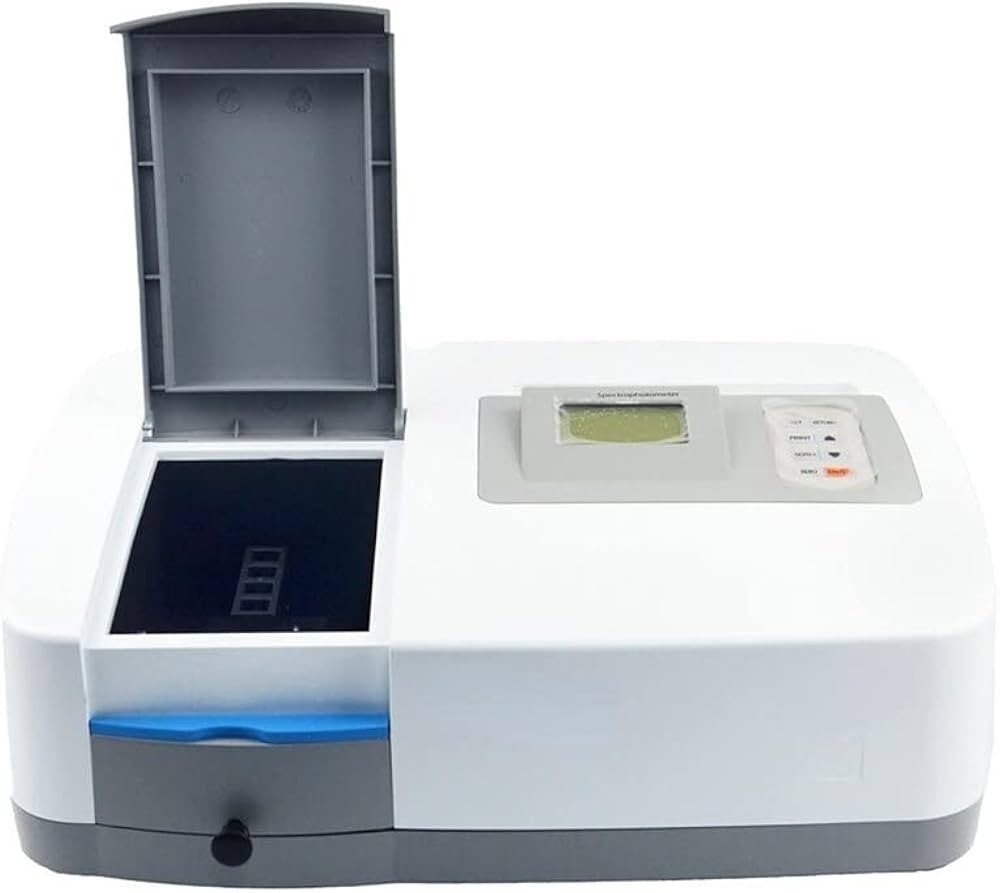Let’s break down what a spectrophotometer actually is. A spectrophotometer is a tool that measures how much light a sample absorbs at different wavelengths. Think of it as a fancy light meter that helps scientists and researchers figure out what’s going on with different substances. Whether it’s for measuring water quality, testing food and beverages, or analyzing lab samples, this device plays a crucial role.
Now, you might be wondering how it all works. Simply put, light passes through a sample, and the spectrophotometer measures the intensity of light before and after it passes through. By comparing these two amounts, it tells us how much light the sample absorbed. This is super helpful for identifying the concentration of substances in the mixture you're testing.
If you’re looking to get your hands on one, this spectrophotometer buying guide will highlight what to look for. First, consider your specific needs. Are you in a lab setting, or just curious about testing things at home? Different models cater to different uses. Also, think about the wavelength range you need. Some types handle visible light, while others can go into the UV or near-infrared ranges.
Another important factor to keep in mind is ease of use. You want something that’s user-friendly, especially if you’re not a tech whiz. Some models come with software that makes data analysis a breeze, which can save you lots of time in the long run. Plus, don’t forget to check for support and warranty. Good customer service can make a world of difference if you ever run into issues.
Key Features to Look For
Remember to think about your specific needs as you check these features. This spectrophotometer buying guide is all about matching the right features to your requirements so you can make the best choice.
Top Spectrophotometer Recommendations
When you're diving into the world of spectrophotometers, it can feel a bit overwhelming with all the options out there. But don’t worry! Here are some top recommendations that could fit various needs you might have. Whether you're a student, researcher, or a lab tech, these picks should make sense as you navigate this spectrophotometer buying guide.
1. Agilent 8453 UV-Vis Spectrophotometer
2. Thermo Scientific NanoDrop 2000
3. Jenway 6305 UV/Visible Spectrophotometer
These options are solid choices and should help you feel more confident in your search. Just remember, the best spectrophotometer for you ultimately depends on your specific needs and how you'll be using it! Happy shopping!
Tips for Using Your Spectrophotometer
Using a spectrophotometer can feel a bit daunting at first, but with some handy tips, you’ll be navigating it like a pro! First off, make sure to calibrate your device before each use. This step is crucial because it ensures that you’re getting accurate readings. Most spectrophotometers come with a calibration solution, so just follow the instructions in your spectrophotometer buying guide to keep things running smoothly.
Next, always clean your cuvettes before and after each measurement. Any residue can affect your results, and nobody wants that! Use a lint-free cloth and avoid touching the clear sides with your fingers to keep them smudge-free. If you’re using disposable cuvettes, make sure they're not scratched, as that can also impact the light path.
When you're ready to take measurements, don’t rush! Allow the sample time to stabilize in the spectrophotometer. Waiting a few moments can make a big difference in accuracy. Also, keep in mind the sample volume required; too little might not give you proper results, and too much could overflow.
Lastly, familiarize yourself with the various modes and settings in your spectrophotometer. There’s often a lot of variety, like absorbance, transmittance, or concentration measurements. Knowing which mode to use for different tasks can save you time and help you get the exact data you need. If you're unsure, check your spectrophotometer buying guide for tips on each mode's best uses!

